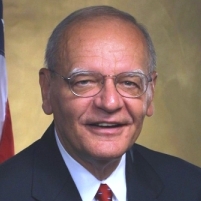Real Financial Reform Slips into Otherwise Bland Bill
Monday, July 12, 2010

After considerable dilution of the financial reform bill in Congress, it seems Wall Street’s supporters and lobbyists missed a provision that could lead to the breakup of large banks during another economic crisis.
As Simon Johnson, professor at MIT’s Sloan School of Management and a senior fellow at the Peterson Institute for International Economics, points out, the reform plan had lost many elements of serious change, from the Volcker Rule to the Lincoln Amendment. The Volcker Rule, similar to the 1933 Glass-Steagall Act, would have prevented banks from investing in private equity and hedge funds and restricted the use of depositor funds for speculation. The Lincoln Amendment would have banned government assistance to any bank that engaged in risky derivatives trading.
But somehow the Kanjorski Amendment made it through the numerous revisions crafted by the House and Senate. Named after Representative Paul Kanjorski (D-Pennsylvania), chairman of the House Subcommittee on Capital Markets, Insurance, and Government Sponsored Enterprises, the provision calls for the creation of a special council made up of 10 federal regulators who would have the power to dismantle big financial firms if they pose a risk to the banking system.
“This is a big shift in responsibility, away from the Federal Reserve, which implicitly had all kinds of emergency powers but would never have taken such action,” writes Johnson.
The body proposed by Kanjorski would include the treasury secretary (as chairman), the chairman of the Federal Reserve’s Board of Governors, the director of the new consumer protection agency, the head of Federal Housing Finance Agency, the chair of the National Credit Union Administration board, a representative of insurance regulators and representatives from each of four standard federal regulatory agencies.
-Noel Brinkerhoff
- Top Stories
- Unusual News
- Where is the Money Going?
- Controversies
- U.S. and the World
- Appointments and Resignations
- Latest News
- Trump to Stop Deportations If…
- Trump Denounces World Series
- What If China Invaded the United States?
- Donald Trump Has a Mental Health Problem and It Has a Name
- Trump Goes on Renaming Frenzy






Comments